 |
Managerial Leadership: Motivating Employees Through Change |
0.50 |
Your organization’s vision was created to inspire and unite the members of the organization as they work toward achieving common goals. Change can distract employees from the vision because going through the change process can be intensely personal and emotional. Remembering the vision and its purpose can keep your employees focused on their role in the company.
In this course you will learn to: motivate employees through a change and prepare for difficulty, and overcome resistance and resolve conflict. |
 |
Advanced Interpersonal Communication: Customers and Vendors |
0.50 |
Your customers include anyone who uses your company or organization to obtain goods and services. Customers might be internal or external. An internal customer is a member of your organization and can be a supervisor, colleague, or subordinate. An external customer is someone from outside your organization. Each customer is of equal importance, regardless of the amount of business that customer provides to your organization. You should provide the same level of quality goods and services all your customers, and all are equally deserving of efficient and effective communication.
In this course you will learn: to respond to customers’ complaints, and to reject a vendor’s contract without rejecting the vendor, and address a complaint to a vendor. |
 |
Draft Presentation: Storyboard of Results |
1.00 |
Your boss has asked you to present the results of your behavioral inquiry at a staff meeting. How do you tell the story of your project, providing enough detail so they will understand, but not too much so they will be able to focus on how this relates to the decision at hand? Listen to a research team present their draft presentation and offer suggestions about how this could be improved to enhance communication. Pick up some creative tips and offer a few of your own. |
 |
Motivation: Identifying, Planning, and Implementing: Positive Mental Attitude |
1.00 |
Your attitude affects every aspect in your life—from your family relationships to your interactions with strangers to your connections with business coworkers. Your attitude could determine the difference between getting a promotion and getting fired, and between a happy marriage and divorce. Stanford Research Institute (SRI) conducted a study that found that success is 88% attitude, and 12% education.
In this course you will learn to: improve your self-confidence, recognize your fears and work to overcome them, and identify the difference between perceptions and reality. |
 |
Project Teams: Conducting Team Meetings |
1.00 |
You should hold regular project team meetings in order to maximize the effectiveness of a project. After the team has been assigned, you should schedule an introductory meeting, and set team goals. The purpose of an introductory meeting is to familiarize team members with each other, introduce the facilitator and recorder, and clarify questions that team members might have.
In this course you will learn to: identify the various roles in project team meetings and maximize the effectiveness of team meetings, understand the goal setting process in introductory meetings, and identify various issues that a team might face during team meetings. |
 |
Managerial Leadership: Employing Motivational Strategies |
0.50 |
You need to use motivational strategies in your leadership to help your employees perform optimally, and to make them feel as though they are helping meet a need. When you motivate your employees to accomplish their goals, and give them the necessary feedback to optimize their performance, they feel they are helping meet the organization’s needs.
You, your employees, and your organization all benefit when you use motivation in leadership. You benefit because, through motivation, your work group will perform optimally. Your employees benefit because they experience job satisfaction and success in accomplishing their goals. Your organization benefits because its members are more committed to helping it be successful and grow.
In this course you will learn to: motivate employees and overcome employee apathy. |
 |
Business Problem Solving: Problem-Solving Process |
1.67 |
You need highly developed problem-solving skills to manage employees and achieve organizational goals. Understanding the problem-solving process is the first step in solving problems effectively.
In this course you will learn to: identify the problem by analyzing the situation, gathering information, and identifying solution criteria, commit to a solution by generating, choosing, and implementing one, confirm that the problem has been eliminated by evaluating the solution. |
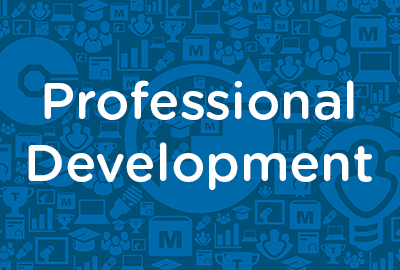 |
Cross-Cultural Business Communication: Cross-Cultural Business Situations |
1.00 |
You might be asked to attend or take part in cross-cultural meetings. Although cross-cultural meetings are common when you travel to a foreign country, they can also take place when several cultures send their representatives to attend meetings. These meetings might also take place over the telephone, online, or in a video conference.
In this course you will learn to: attend and organize cross-cultural meetings, conduct negotiations, and solve problems during a cross-cultural meeting. |
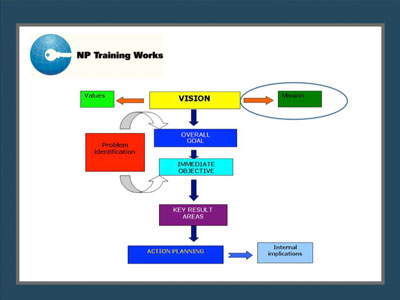 |
Creating and Implementing an Effective Strategic Plan for Your Organization |
1.00 |
Without strategic direction it is hard to get where you want the organization to go. This Webinar offers you a process for reaching your organizational goals. Strategic plans help your organization, or department, set the roadmap to make a significant mission impact. Through this Webinar you will learn a model for completing a Strategic Planning process in your organization. It covers the entire process from planning to defining the strategic framework and then creating a process for implementation activities. You will learn how to create a strategic framework that gives the activities coherence and direction, ensuring that your strategic plan becomes a living, breathing document that is fully utilized in the organization. You will also learn how to involve your board, staff, and other important constituencies in the process to increase your chances of successful implementation. In addition, you will receive leave-behinds that give you practical exercises and instructions to use during your strategic planning process. |
 |
Managerial Leadership: Coping Through a Change Process |
1.00 |
Whether your employees perceive change as positive or negative, you might encounter an emotional response from them. They will have many questions regarding their roles, competencies, and, possibly, even their futures. Your employees might feel they are being forced out of a comfort zone, and they might experience a loss of familiarity. Typical responses during a change include feelings of doubt, anxiety, fear, and anger. Sometimes, changes in the workplace can trigger a severe emotional response.
In this course you will learn to: respond to distress and reduce stress, and succeed through failure and deal with mistakes. |
 |
Advanced Interpersonal Communication: Supervisors |
0.75 |
When you think of a supervisor, you probably think of your immediate boss. However, in the workplace, most people have several supervisors. Your workplace might be divided into teams, departments or divisions. Within each level, there is a supervisor to whom you are accountable, even if you do not deal with that person on a day-to-day basis. Company executives and board members can also be considered supervisors because they might have the power to make decisions regarding your employment, salary, promotions, and work assignments. It is important to communicate effectively with all of your supervisors to maintain an efficient workplace and to be able to promote your own ideas for improvements.
In this course you will learn to: identify the types of ineffective supervisors and ways to interact with them, and negotiate a raise with a supervisor and offer an effective resignation. |
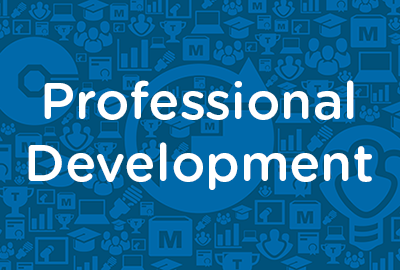 |
Interviewing Skills: Evaluating and Deciding |
0.67 |
When determining which candidate will be most successful in the job and your organization, you must complete two important steps. First, you should assess each candidate’s experience and past performance, and compare them to the job’s success factors. Then, you should compare candidates with one another to identify the one with the best fit for the job and culture.
In this course you will learn to: identify the types of bias and the steps to evaluate a candidate, and identify several criteria for ranking candidates. |
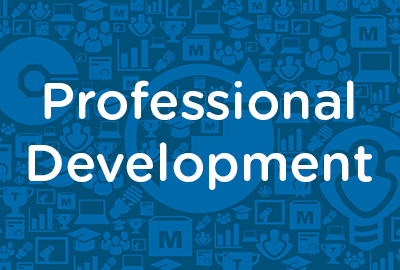 |
Cross-Cultural Business Communication: Differences In Communication |
1.00 |
When communicating with people of another culture, it is important to be aware of the person’s level of active participation in a conversation. In some cultures, highly active participation is the norm, while other cultures dictate a more passive involvement.
The exchange between people engaged in communication demonstrates conversational involvement. In any culture, a message must have both a sender and a receiver. In cultures with high conversational involvement, the receiver would send verbal and nonverbal cues, such as eye contact, nodding, and interjections, such as "I’m listening" or "Tell me more." In cultures with low conversational involvement, receivers would adopt a passive posture, perhaps staring at the ground with hunched shoulders, and would simply absorb the message without offering cues on whether they are listening or not.
In this course you will learn to: identify the differences in verbal communication across cultures, and improve your nonverbal communication skills by understanding the differences in gestures and expressions that vary across cultures. |
 |
Cross-Cultural Business Communication: Addressing Cross-Cultural Issues |
1.00 |
When communicating with coworkers, it is very important to respect other cultures. You should refrain from using humor that might offend people from other cultures, and avoid stereotypes that might affect how you treat your coworkers.
Before communicating with employees who belong to a different culture, it is important to research their cultures and understand clearly what is expected from your communication. You should determine what types of communication are most appropriate in specific situations. For example, you should investigate the most appropriate method for communicating a behavioral problem to an employee. Some cultures prefer profuse praise to cushion the constructive feedback, while others prefer a more direct approach. The most important thing to communicate to employees of different cultures is respect. By approaching them in accordance with their cultural standards and expectations, you’ll show respect for their cultures and your communication will be enhanced.
In this course you will learn to: identify gestures used in different cultures and build a cross-cultural team, and discuss guidelines for writing cross-cultural documents and assembling a translation team. |
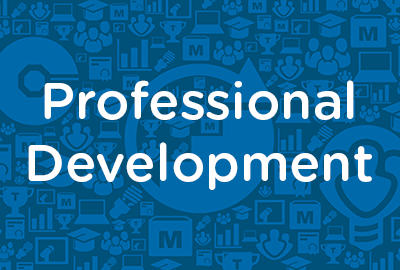 |
Cross-Cultural Business Communication: Communicating Across Cultures |
1.00 |
When communicating across cultures, you could come across a number of barriers. In addition to language barriers, there might be more subtle obstacles, such as cultural biases and conflicting communication styles. Building relationships with people of other cultures will provide you with the incentive to work through those barriers and achieve effective communication.
In this course you will learn to: establish rapport and build trust, and listen well and provide positive and constructive feedback. |
 |
Combating Sexual Harassment in the Workplace |
1.00 |
Welcome to Combating Sexual Harassment in the Workplace. This course was created by CypherWorx in alignment with training materials developed by New York State. While nearly a dozen states have enacted sexual harassment legislation, New York is among those with the strongest and most stringent proposed sexual harassment laws in the nation. (complianceweek.com). This course may be used as a general sexual harassment training, however, you should check with your state and local municipality for other important requirements. |
 |
Employee Performance: Resolving Conflicts |
1.50 |
Understanding the different styles of conflict resolution can help you identify the most appropriate process to use when addressing conflicts in the workplace. There are two general types of conflict resolution: indirect and direct.
In this course you will learn to: identify conflict resolution styles, resolve conflicts in the workplace, resolve team conflicts, and identify the communication skills required to resolve conflicts. |
 |
Quality Management: Implementing Quality Changes |
0.67 |
Understanding a process is the only way a process improvement team can effectively improve the process. The team must understand how the process currently functions before they can identify problems. In addition, in order to understand how potential changes will affect the process, the team needs to understand specific elements of the process, as well as the process as a whole.
In this course you will learn to: identify the elements of a process, as well as techniques used to streamline a process, and measure various aspects of a process. |
 |
Conducting Meetings: Listening Effectively and Asking Questions |
0.50 |
To communicate effectively during a meeting, you have to listen and ask appropriate questions. Listening and questioning are two interdependent skills that will help you create a positive climate, develop positive dialog, and achieve the group’s goals.
By listening and questioning effectively, you’ll actively engage yourself and others in the meeting. Actively participating will enable you to quickly identify and address other participants’ thoughts, ideas, and concerns. Facilitating communication in this manner will foster individual and group success.
In this course you will learn to: identify the main causes of conflict, the ways to resolve conflict in meetings, and the common difficult personality types in meetings, and identify the characteristics of a positive and negative climate, and the steps to build a positive climate when communicating. |
 |
Advanced Interpersonal Communication: Communication Styles and Methods |
0.75 |
To be successful in the workplace, you must be able to effectively communicate and cooperate with clients and co-workers. Learning about the four types of communication styles helps a listener understand a speaker’s perspective. It also helps a speaker understand how their communication affects the listener.
In this course you will learn: to identify primary and secondary communication styles, and to communicate using various verbal and nonverbal modes of communication. |
 |
Customer Service: Listening and Questioning |
0.75 |
This topic will discuss the various types of listening: passive, selective, and active. You will learn that paraphrasing or summarizing what the customer says is a good way to confirm what you hear. In this course, you will also learn about questioning and the types of questions that are used to elicit the information you want from customers. There are four types of questions: open-ended, closed, alternative-choice, and clarifying. This course will also discuss the examination process that can be used to understand the customer’s problem and prescribe a realistic solution. |
 |
Project Management - Basic: Time Management |
1.25 |
This course will teach you how to identify the components of time management, identify the purpose of activity definition and sequencing, and recognize different diagramming techniques. You will also learn how to identify the factors that affect activity duration, and identify techniques for estimating activity duration. |
 |
Customer Management |
1.00 |
This course will teach you about handling dissatisfied customers. You will learn how to maintain composure and be professional through both verbal and nonverbal communication. You’ll learn the difference between upset and angry customers and how to handle each. With angry customers, you will learn how to listen, remain calm, avoid negative filters, and express empathy. Then, with upset customers, you’ll be taught methods for making your service to them more effective. Finally, you will learn how to manage, recognize, and reduce your own stress to better serve your customers. |
 |
Customer Service: Using What You've Learned |
0.25 |
This course will provide you with the information and—we hope—the inspiration to improve your customer service skills and work toward personal success. The final two steps are up to you: You must implement what you have learned, and continue to work on improving your skills. |
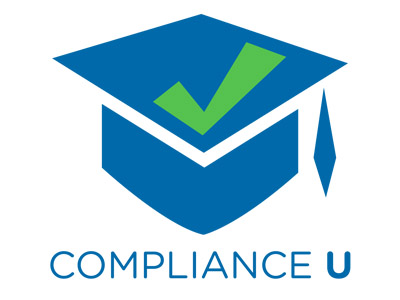 |
Sexual Harassment Prevention for Employees |
1.00 |
This course will provide you with an overview - defining sexual harassment and general harassment, giving examples of prohibited behaviors, explain the responsibilities of you and your organization and teach you about liability. |


























